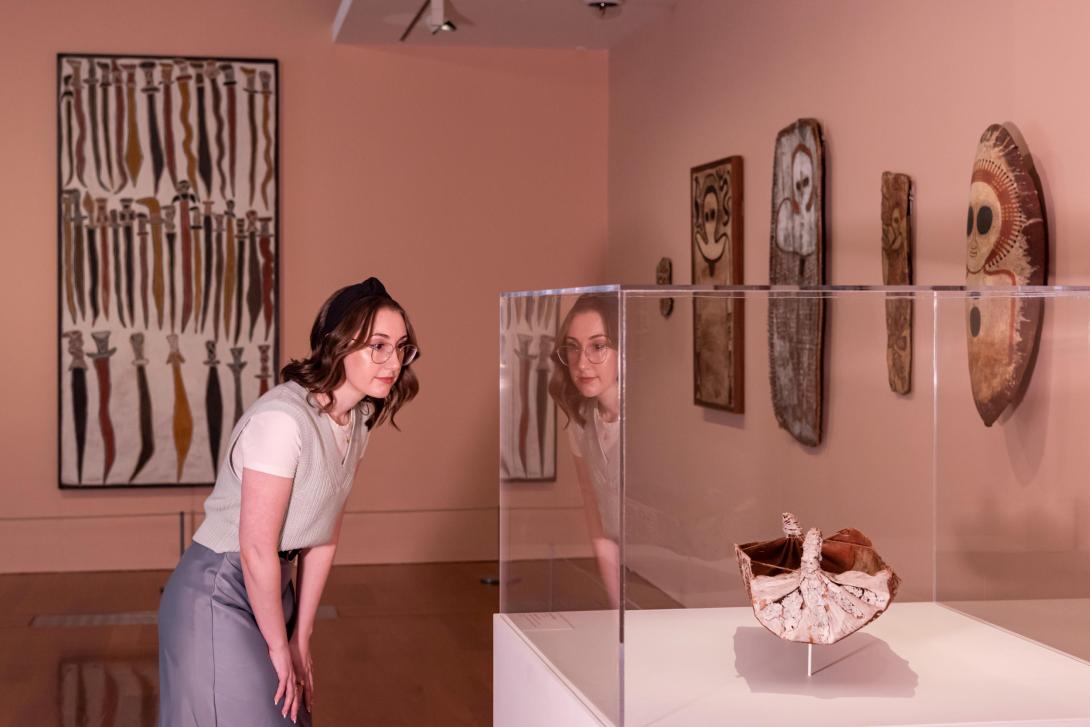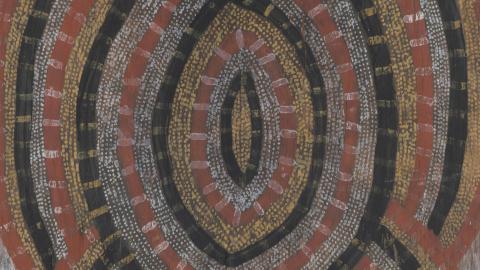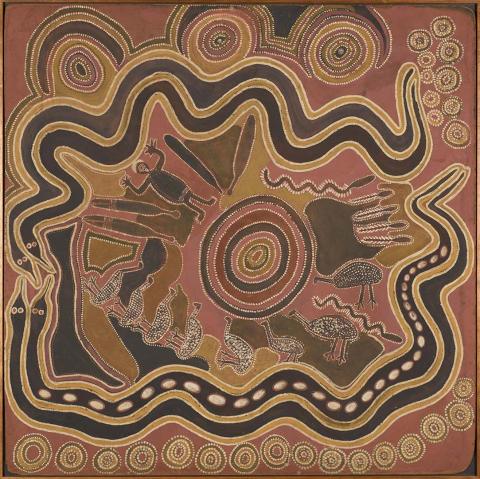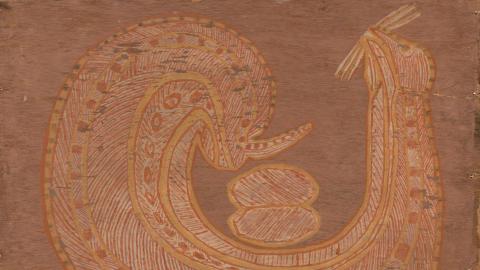The Kimberley
The Kimberley region lies in the north-east corner of Western Australia, bordered by the Pilbara to the south and the Northern Territory to the east. Separated from the rest of the country by vast areas of rugged desert, the sparsely populated region has fewer people per square kilometre than almost any other place on Earth.
Though early representations of the cultural diversity of the Kimberley were recorded in various Aboriginal art forms, paintings on bark and board first appeared in the late 1930s, when missionaries and anthropologists encouraged artists to produce works on transportable materials. These paintings are associated specifically with the local cave imagery — one of the world’s most substantial bodies of Indigenous rock art ranging from the present back into the Pleistocene era. Still clearly visible are the dominant Wandjina images – estimated to be around 3000 to 4000 years old.

Works by (l–r) Dhuwarrwarr Marika and artists from the Kimberly region, installed for ‘Transitions’, GOMA, September 2022 / © The artists / Photograph: J Ruckli, QAGOMA
Wandjina, the large anthropomorphic ancestral beings are typically depicted with a rounded head accentuated by a radial halo, large black eyes abutting a slender nose, white shoulders and the absence of a mouth. Wandjina are imbued with creational and seasonal powers related to rain, regeneration and fertility, and are tasked with the continuance of both human beings and wildlife. Each painting is believed to be an actual Wandjina spirit that transformed itself into the painting when it ceased wandering the earth in the mythical past.
Worrorra artist Alec Mingelmanganu (1905–81), went from repainting Kimberley Rock art in the 1960s to painting on bark and then canvas. His Wandjina images are some of the most haunting.

Wandjina figure 1990
- KARADADA, Lily Mindindil - Creator

Wandjina c.1976
- MINGELMANGANU, Alec - Creator

Water carrier 1998
- KARADADA, Rosie - Creator




